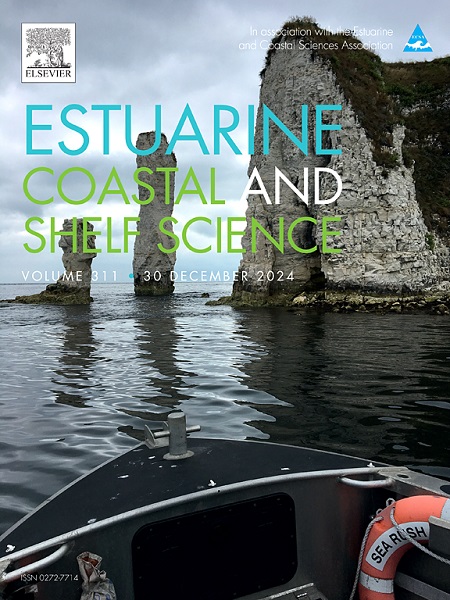Assessment of the coral habitability status of marine ecosystems along the eastern coast of the Andaman Islands, India
IF 2.6
3区 地球科学
Q1 MARINE & FRESHWATER BIOLOGY
引用次数: 0
Abstract
The Andaman Islands, hosting one of the most enriched marine ecosystems globally, have faced significant ecological threats due to various physico-climatic changes over recent decades, adversely impacting approximately 25 mangrove species and 135 coral species. To evaluate these impacts systematically on regional marine ecology, this study develops and applies a coral habitat quality index (CHI) along the eastern Andaman coast using an integrated approach combining key physico-climatic indicators, participatory coastal community appraisals, and geospatial analysis. A total of 187 georeferenced sampling points within a 5 km offshore buffer were analysed for the years 2008, 2013, and 2018. The Analytic Hierarchy Process (AHP) was employed to prioritise factors influencing coral habitat conditions, with stakeholder-based pairwise comparisons from four distinct coastal community groups forming the basis for CHI computation. Results reveal that the southern zone of the eastern coast has progressively developed into a relatively healthier marine habitat than its northern and central counterparts, with CHI values averaging 1.24 (2013–2018), compared to 1.01 and 1.08, respectively. Notably, offshore zones south of Rangat exhibit the most ecologically resilient characteristics, evidenced by a consistent rise in CHI scores across the study period. The methodological framework presented here enables replication across comparable island and coastal ecosystems, offering a scalable decision-support tool for marine conservation planning, impact monitoring, and adaptive coastal resource governance. Overall, this study advances technical insight into spatio-temporal coral habitat dynamics while supporting evidence-based policy and sustainable marine ecosystem management strategies.

印度安达曼群岛东岸海洋生态系统珊瑚宜居状况评估
安达曼群岛拥有全球最丰富的海洋生态系统之一,近几十年来,由于各种自然气候变化,安达曼群岛面临着重大的生态威胁,对大约25种红树林物种和135种珊瑚物种产生了不利影响。为了系统地评估这些对区域海洋生态的影响,本研究采用综合方法,结合关键物理气候指标、参与式沿海社区评估和地理空间分析,开发并应用了安达曼东部沿海的珊瑚栖息地质量指数(CHI)。在2008年、2013年和2018年,研究人员对5公里离岸缓冲区内的187个地理参考采样点进行了分析。采用层次分析法(AHP)对影响珊瑚生境条件的因素进行优先排序,并对来自四个不同沿海群落的基于利益相关者的两两比较构成了CHI计算的基础。结果表明,与北部和中部相比,东部沿海南部地区逐渐发展成为相对健康的海洋栖息地,其CHI值平均为1.24(2013-2018年),而东部沿海南部地区的CHI值分别为1.01和1.08。值得注意的是,Rangat以南的近海地区表现出最具生态弹性的特征,在整个研究期间,CHI得分持续上升。本文提出的方法框架可以在可比的岛屿和沿海生态系统中复制,为海洋保护规划、影响监测和适应性沿海资源治理提供可扩展的决策支持工具。总体而言,本研究在支持基于证据的政策和可持续海洋生态系统管理战略的同时,推进了对珊瑚栖息地时空动态的技术洞察。
本文章由计算机程序翻译,如有差异,请以英文原文为准。
求助全文
约1分钟内获得全文
求助全文
来源期刊
CiteScore
5.60
自引率
7.10%
发文量
374
审稿时长
9 months
期刊介绍:
Estuarine, Coastal and Shelf Science is an international multidisciplinary journal devoted to the analysis of saline water phenomena ranging from the outer edge of the continental shelf to the upper limits of the tidal zone. The journal provides a unique forum, unifying the multidisciplinary approaches to the study of the oceanography of estuaries, coastal zones, and continental shelf seas. It features original research papers, review papers and short communications treating such disciplines as zoology, botany, geology, sedimentology, physical oceanography.

 求助内容:
求助内容: 应助结果提醒方式:
应助结果提醒方式:


